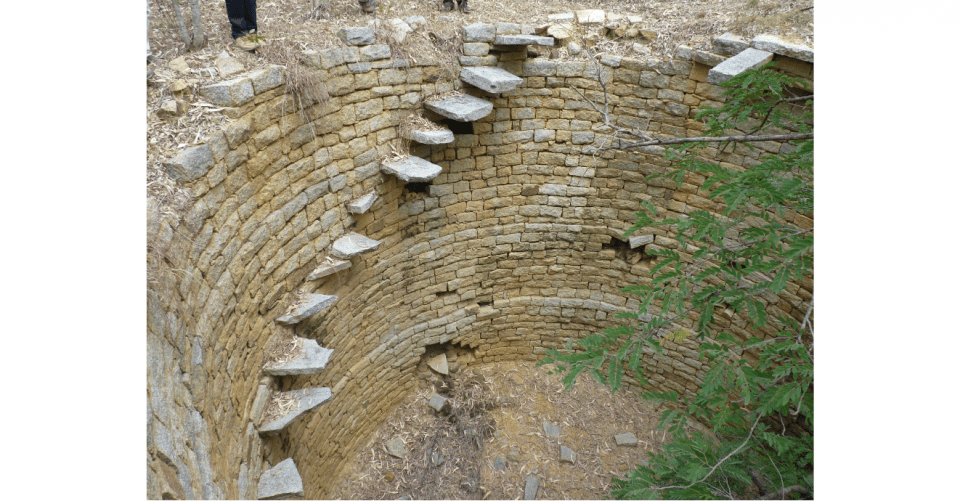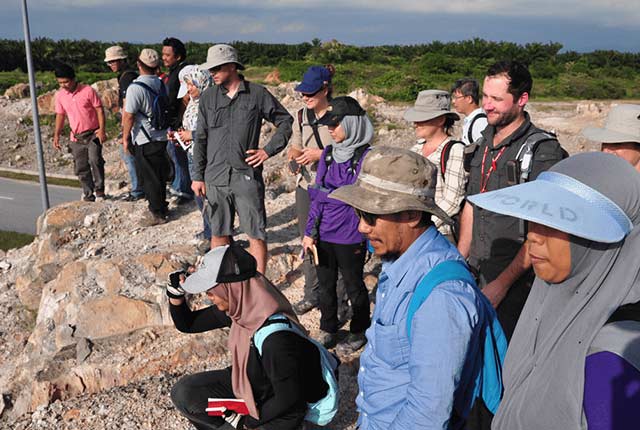Bangalore in southern India is a city faced by serious challenges in supplying fresh water to its 12 million inhabitants. Historically, inhabitants obtained water from ‘tanks’, which are excavations or dams designed to capture and store monsoonal rainfall. Some inhabitants would also have obtained water from shallow dug wells. With rapid growth, the city has increasingly relied on water pumped from the River Cauvery, but this involves pumping water from over 100 km away and the river is 500 m below the city.

A traditional well on the outskirts of Bangalore, now dry as water levels have fallen. BGS © UKRI.
Shallow wells have been replaced by deeper boreholes, but the granitic and gneissic bedrock has relatively low storage capacity and many boreholes owners struggle to obtain the water they need. Perennial water shortages have led to a renewal of interest in the role of the tanks and whether they can be used to enhance groundwater recharge.
BGS scientists have been working with the Indian Institute of Science, Bangalore, and the Ashoka Trust for Environmental Education to develop an understanding of the interaction between public water supply systems, sewage systems, the tanks and groundwater. By studying the geological controls on fracture systems in the bedrock and measuring lake levels, groundwater levels and the chemistry of the waters, we have been able to improve our understanding of how much water leaks from the tanks and how much water recharges from leaking water mains and sewers.
You may also be interested in

Resilience of Asian cities
Our research aims to improve city resilience by integrating geology into urban subsurface planning and urban-catchment science in India and south-east Asia



